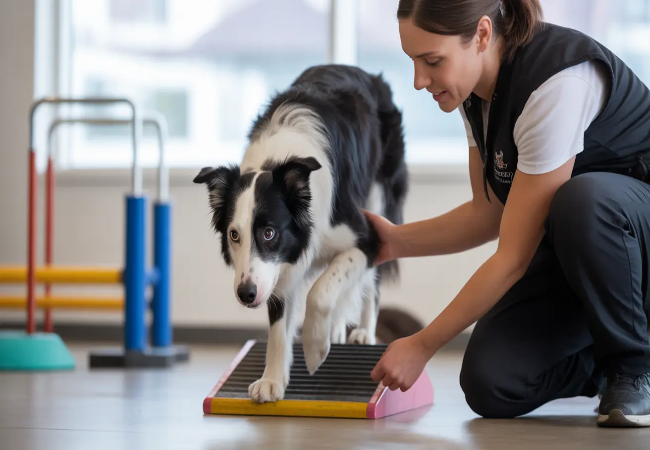Vet Guide to Cerebellar Degeneration in Dogs 2025 🐶🩺

In this article
Vet Guide to Cerebellar Degeneration in Dogs 2025 🐶🩺
By Dr. Duncan Houston BVSc
Cerebellar degeneration (also called cerebellar cortical degeneration or abiotrophy) occurs when Purkinje cells in the cerebellum gradually die. This leads to motor incoordination, tremors, and balance issues. It may be inherited or acquired, and currently has no cure. Instead, the goal of treatment is supportive management.
📍 Causes & Breeds
- Inherited cerebellar abiotrophy: genetic degeneration in breeds like Border Collie, Airedale, Samoyed, Beagle, Gordon Setter, Kerry Blue Terrier; age of onset varies by breed.
- Cerebellar hypoplasia: non-progressive underdevelopment, often due to in utero infections like canine herpesvirus—signs from birth and generally stable.
- Acquired degeneration: due to inflammation, toxins, immune, neoplastic or paraneoplastic syndromes (e.g., paraneoplastic cerebellar degeneration).
👀 Clinical Signs
- Tremors—often an intention tremor during movement.
- Wide-based, unsteady gait with exaggerated steps (hypermetria).
- Head bobbing or nodding (titubation), difficulty with stairs, and falls easily.
- Often normal mental status and posture reactions; menace reflex is often absent.
🔬 Diagnosis
- Clinical evaluation: noting typical ataxia pattern, tremors, menace deficit.
- MRI: shows cerebellar atrophy—enlarged sulci and reduced folia visible on T2-weighted images.
- Genetic testing: available for specific breeds (e.g., via Paw Print Genetics).
- CSF and biopsy: CSF may be normal; biopsy is definitive but invasive.
- Rule out other causes: bloodwork for infection, toxins, and neoplastic work-up.
💊 Management & Supportive Care
- No curative treatment currently exists.
- Supportive medications like amantadine, buspirone, coenzyme Q10, and acetyl‑l‑carnitine may aid motor function.
- Physical enrichment: massage, hydrotherapy, and safe obstacle courses improve coordination.
- Environmental safety: remove stairs, sharp objects; use non-slip surfaces.
- Mobility aids: harnesses or dog wheelchairs help severely affected dogs adapt.
📈 Prognosis & Monitoring
- Inherited cerebellar abiotrophy: progressive; severity ranges—some decline slowly over months to years, others rapidly.
- Cerebellar hypoplasia: non-progressive—many dogs compensate well and live normal lives.
- Acquired causes: depend on treatability; paraneoplastic/inflammatory may stabilize or progress.
- Regular re-checks to assess mobility, tremor, balance, and amend the care plan.
✅ Dr Duncan Houston’s Clinical Tips
- 🔍 Recognize pattern: intention tremors + wide-based gait = cerebellar involvement.
- 📆 Use MRI early for confirmation and to evaluate progression.
- 🧬 Consider breed-specific genetic testing to assist breeding decisions.
- 🏠 Create a safe, enriched environment to preserve mobility.
- 📌 Guide owners: train with positive methods, use support devices, and maintain routine.
If your dog is showing tremors, unsteady gait, head bobbing, or falls—especially in genetically predisposed breeds—contact via AskAVet.com for diagnosis support.🐾❤️






